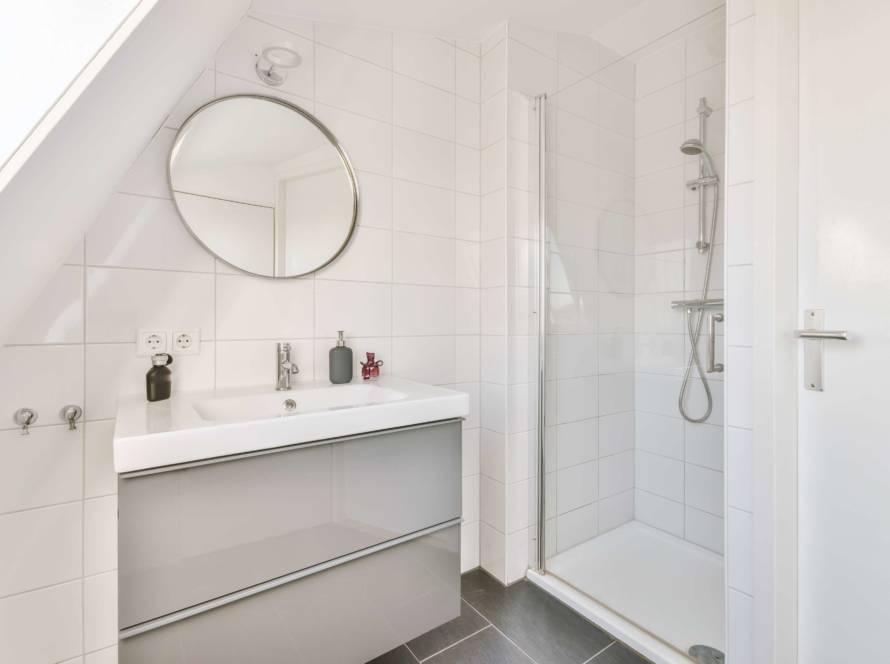Any form of remodelling is a stressful procedure to go through. But when it comes to the bathroom, which is an area that has to be both very efficient and tranquil, utilitarian and, ideally, a little bit luxurious, the stakes appear to be a little bit higher. Along the route, there are a million choices that need to be taken, ranging from the mirror to the grout, and the final cost may come as a surprise. What should you be aware of before you get started? Heed our words of caution:
1. Don’t just take it for granted that your contractor is on the same page as you.
“When you’re functioning as the general contractor—or even working with a general contractor—you need to spell out every part of the plan, and you should never assume that everyone is up to speed,” said the mother-daughter team behind Matriarchy Build in How to Avoid Rookie Remodeling Mistakes. “When you’re functioning as the general contractor—or even working with a general contractor—you need to spell out every part of the plan,” says Matriarchy Build. They continue by saying, “Someone we know had a contractor demo the incorrect bathroom.”
Imagine the renovations as being similar to surgery: in order to prevent having the incorrect knee replaced, it is essential to ensure, then ensure once more, then ensure once more, and finally ensure one more time that the appropriate knee (or toilet) is noted and agreed upon.
2. A bathroom makeover costs how much? You’ll be surprised.
Do you believe that you can completely renovate your bathroom on a budget of a few thousand dollars? According to the findings derived from a number of sources, the typical expenditure for renovating a bathroom in 2016 was $10,000. We are sorry to break the news to you. A simple, low-grade makeover using materials that are less costly or fewer changes may cost between $1,500 and $5,000, but a high-end, top-to-bottom restoration could cost up to $25,000.
According to estimates provided by the home improvement industry, the most expensive component of this project is the plumbing and fixtures (about 29%), followed by the countertops and other surfaces (21%), labour (20%), and cabinets and hardware (11%) (16%). It is important to keep in mind that most experts agree that the total cost of remodelling your bathroom shouldn’t exceed 5 to 10% of the value of your property.
3: Good lighting design is an art in and of itself.
Do not believe that you can simply instal a few lights and call it a day; lighting requires careful thought and placement because bathrooms are often small and/or dark and filled with mirrors, which complicates how light bounces around the room. Do not believe that you can simply instal a few lights and call it a day; One diffuse light mounted in the middle of the ceiling is the quickest and easiest method to illuminate a bathroom. Do you already have a bathroom that has a decent amount of light? It should be adequate with only a pair of wall sconces. Considering installing downlights that are recessed into the ceiling? Be mindful of placement: avoid placing directly over light-coloured worktops (since they will reflect the lights), and position the lighting so that it is near to the wall over a vanity so that there is an optimal amount of light for gazing in the mirror. In addition, if you put a lot of effort into putting your cosmetics, you may want to think about installing vertical fluorescent light lights on each side of the mirror.
4: When it comes to tile, there are a few different varieties to know.
Forget the seemingly limitless piles of tile samples that your contractor will show you; all you really need to keep in mind are a handful of the most important variations. The types of tile that are particularly hardy, long-wearing, and classic in the bathroom are porcelain, glass, natural stone, cement, and, of course, subway tile (a type of ceramic tile that is so popular we’re counting it in its own category). These tiles can be used in shower stalls, on floors, and on walls. Once you’ve narrowed your choices down to these tried-and-true alternatives, selecting a colour and a form is all that’s left to do; from there, you can take it from there.
5: Don’t overlook the importance of storage.
The ability to store items effectively is essential to the design of a bathroom that exudes serenity while still being functional. When developing your designs, you should make it a point to search for potential storage areas, even if they are on the more basic and inconspicuous side, as this will help the storage areas appear more natural and incorporated into the overall design. As an example, renowned architect Malcolm Davis has been quoted as saying, “I prefer to put a pair of tall shallow cabinets disguised in a stud bay.” You can store a lot of things on a shallow shelf; you do not need a deep shelf for storage. In the shower, I want to create a recess, and I attempt to include towel bars so that they seem and feel like they were always there.



